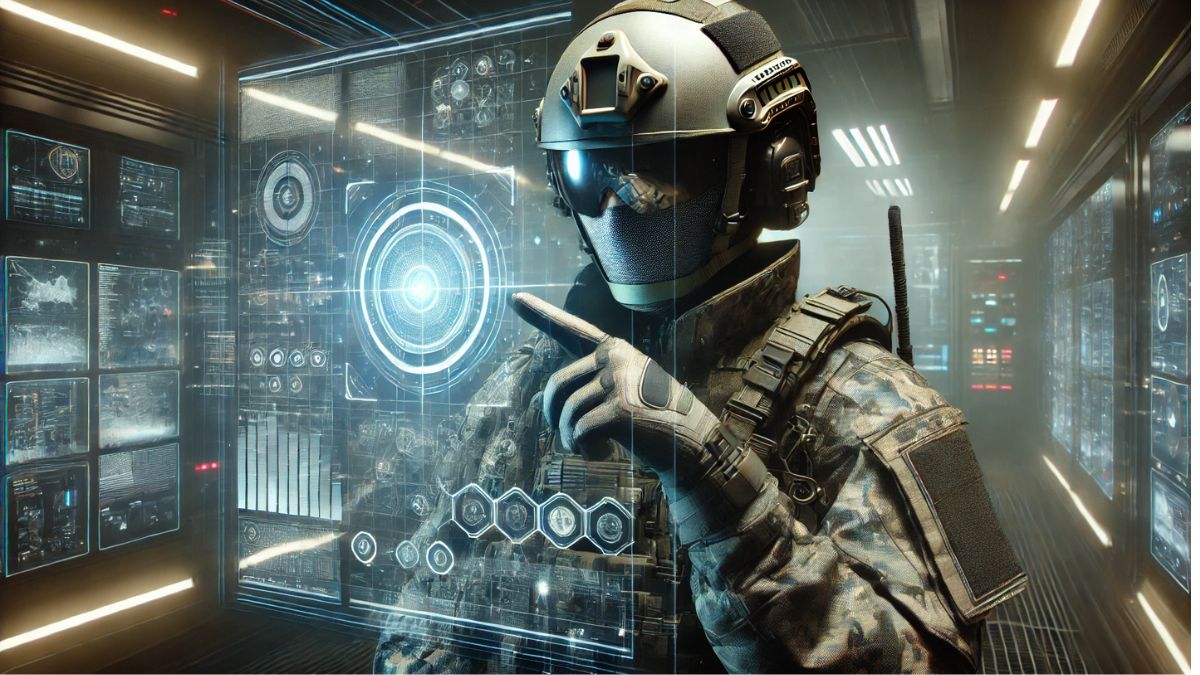Artificial intelligence (AI) has fundamentally changed nearly every field in the world. Modern warfare is no different.
With its global adversaries accelerating AI adoption, India’s armed forces recognise that integrating AI is no longer optional– it has become essential.
In a bid to shift lean into data-driven operations and predictive warfare, the Indian Army has moved quickly to embrace this transformative technology.
From the army top brass to industry players and think tanks, the enthusiasm for integrating AI into the Indian Army has been strong.
But how is the push going– and where will it eventually go?
AI, Army, and the focus on data
In an exclusive interview with Firstpost on the sidelines of Aero India 2025, the Chief of Army Staff, General Upendra Dwivedi, spoke about using AI for defence.
“A crucial aspect of AI is having credible data. You must be able to extract intelligence from it,” he told Firstpost.
That is to say that the efficacy of the functioning of the armed forces depends upon the legacy of large data management and the ability to arrive at decisions related to operations, operational logistics, and administration.
However, decision-making is time-consuming due to either lack of data or excess data. “Introduction of AI with their LLM [Large Language Models] prove beneficial in this regard,” Lieutenant General Dushyant Singh (Retd), Director General of the Centre for Land and Warfare Studies (CLAWS), said.
Where is AI being used in India?
AI applications in the Army are being introduced in a big way for intelligence, surveillance, and reconnaissance (ISR) operations, autonomous systems such as UAVs and UGVs, and cyber security.
In ISR, AI enhances data analysis, processing satellite imagery, and signal intelligence. Autonomous systems benefit from AI’s capabilities in decision-making, hazard detection, navigational autonomy, and adaptability.
Impact Shorts
More ShortsCyber security, a critical domain, uses AI for threat detection, intrusion prevention, network protection, and malware detection, Lt Gen Singh explained.
AI also has a significant contribution towards simulation and training. Dynamic scenario generation, tactical decision support, and customised training modules prepare soldiers for unpredictable battlefield environments.
Discussing AI’s potential in predictive analytics, Gen Dwivedi had said, “Predictive analysis is the first step we are working on, and in terms of generative AI, we are engaging with BEL and other companies. We have begun that in a big way.”
“AI enables predictive threat detection, helping militaries anticipate and neutralise risks before they escalate,” said Pascale Sourisse, President & CEO of Thales International.
Predictive maintenance in engineering, supply chain management in logistics, autonomous drones in combat systems, and AI-powered intrusion detection in cyber security are other critical applications.
The ecosystem for AI in defence in India
Since launching its national strategy for AI in 2018, India has made institutional advancements in AI in defence, according to the International Institute for Strategic Studies .
The creation of a high-level Defence AI Council and a Defence AI Project Agency in 2019 set the foundation for defence-specific AI integration.
By 2021, the Indian Army had already demonstrated an AI-enabled swarm of 75 aerial drones during the Dakshin Shakti military exercise.
Government projects focusing on atmospheric visibility prediction, imagery analysis, drone-collision avoidance, and ship tracking suggests that AI is being embedded across military systems. The specifics of these projects remain classified.
On the diplomatic front, India continues to advocate for openness, safety, trust, and accountability in AI.
Global tech giants have taken note. For instance, Microsoft has committed $3 billion to build data centres in Telangana. Thales says that “In India, our engineering competence centres are early adopters of Thales’ AI tools, and the teams are actively using them to enhance products.”
The focus is also on domestic innovation. Gen Dwivedi has suggested the collaborative approach the Indian Army is looking at: “…generative AI will play a very important role. So, working with other companies, we should be part of the journey together,” he said.
Looking ahead
In the times to come, AI’s role in strategic planning, wargaming, and long-term predictive analysis will be crucial.
Lt Gen Singh suggested that the Army may be interested in AI-enabled Manned Unmanned Teaming (MUM-T) between tanks & drones, AI-based intrusion detection, data mining tool for analysis, and AI-based aircraft recognition package, among others.
In a nutshell
As Pascale Sourisse of Thales aptly put it, “Integrating AI into defence ensures armed forces can respond swiftly, precisely, and efficiently to evolving threats while safeguarding national security.”
Future conflicts are likely to be shaped as much by data and algorithms as by manpower and firepower. By collaborating with technology partners, investing in AI-driven systems, and embedding AI into its core operations, India is positioning its military to tackle these evolving security challenges.
)